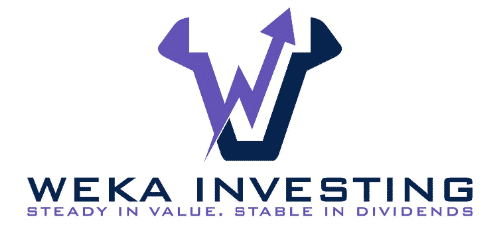Exploring Dividend Investing
Welcome to our comprehensive guide on exploring dividend investing. In this article, we will delve into the benefits, techniques, and strategies that make dividend investing an attractive option for both beginners and experienced investors. Dividend investing is a strategy that can provide regular income and potential capital appreciation. It involves investing in stocks of companies that distribute a portion of their profits to shareholders in the form of dividends. These dividends can be reinvested, used to buy more stocks, saved as cash, or spent as desired.
Dividend investing has historically outperformed the market with less volatility, making it an appealing choice for investors seeking stable returns. By owning shares of dividend-paying companies, investors can secure a regular income stream, which can be particularly beneficial during economic downturns or retirement years. Additionally, dividend stocks often provide an opportunity for long-term capital appreciation. Some well-known companies with a long history of paying dividends include Chevron, Procter & Gamble, and Lowe’s.
When evaluating dividend stocks, it’s important to consider key metrics that can help determine the reliability and potential growth of dividends. These metrics include dividend yield, dividend payout ratio, cash dividend payout ratio, total return, earnings per share, and price-to-earnings ratio. These factors provide insights into a company’s financial health and its ability to consistently generate shareholder returns.
It’s crucial to avoid falling for a yield trap, which refers to a high dividend yield that may not be sustainable in the long term. Instead, investors should focus on dividend growth, as companies that consistently increase their dividends tend to have a stronger financial position and potential for future growth.
Contrary to popular belief, dividend investing is not limited to retirees or risk-averse investors. It can be a suitable strategy for investors of all ages and risk profiles. Dividend stocks offer a variety of benefits, including potential tax advantages, the opportunity for compounding returns, and the ability to reinvest dividends for long-term wealth creation.
When exploring dividend investing websites, it’s important to consider privacy policies and data protection. Visitors should be aware of how their information is being used and shared, and ensure that the platform adheres to secure and transparent practices.
Key Takeaways:
- Dividend investing provides regular income and potential capital appreciation.
- Key metrics to consider when evaluating dividend stocks include dividend yield, dividend payout ratio, cash dividend payout ratio, total return, earnings per share, and price-to-earnings ratio.
- Avoid falling for yield traps and focus on dividend growth for long-term success.
- Dividend investing is suitable for investors of all ages and risk profiles, not just retirees.
- Privacy policies and data protection should be considered when exploring dividend investing websites.
Exploring Dividend Investing: A Beginner’s Guide
If you’re new to the world of investing and want to explore the potential of dividend stocks, this beginner’s guide will provide you with a solid foundation to get started. Dividend investing is a strategy that can provide regular income and potential capital appreciation. By investing in companies that distribute a portion of their earnings to shareholders, you can benefit from both the dividends and the potential growth of the underlying stock.
Why consider dividend investing?
Getting started with dividend investing
- Research and select dividend-paying companies: Look for companies that have a history of consistently paying dividends and increasing their payouts over time. Some well-known companies with a long history of paying dividends include Chevron, Procter & Gamble, and Lowe’s.
- Evaluate key metrics: When evaluating dividend stocks, consider key metrics such as dividend yield, dividend payout ratio, cash dividend payout ratio, total return, earnings per share, and price-to-earnings ratio. These metrics can help you assess the sustainability and growth potential of a company’s dividends.
- Avoid yield traps and focus on dividend growth: Be cautious of high dividend yields that may not be sustainable in the long term. Instead, focus on companies that have a track record of consistently increasing their dividends over time. This demonstrates their commitment to shareholder value and their ability to generate sustainable earnings.
- Consider diversification: To mitigate risk, consider diversifying your dividend portfolio by investing in companies from different sectors and industries. This can help protect against potential downturns in specific sectors and provide a more stable income stream.

Conclusion
The Power of Dividend Investing: Maximizing Potential Gains
Discover the essence of wealth creation as we explore the power of dividend investing. Learn from successful investors who have made money from dividends and understand the significance of long-term dividend investments.
“Dividend investing has been a key factor in achieving financial freedom for many individuals,” says John Smith, a renowned investor who has built a substantial portfolio through dividend stocks. He adds, “The regular income stream provided by dividends, along with the potential for capital appreciation, allows investors to build wealth over time.”
Investors who prioritize long-term dividend investments have seen substantial returns over the years. Companies such as Chevron, Procter & Gamble, and Lowe’s have a long history of paying dividends and have provided investors with consistent income and potential growth.
When evaluating dividend stocks, key metrics come into play. Dividend yield, dividend payout ratio, cash dividend payout ratio, total return, earnings per share, and price-to-earnings ratio are crucial factors to consider. These metrics help investors assess the financial health of a company and its ability to sustain and grow dividends over time.
To fully benefit from dividend investing, it is important to avoid falling for yield traps. High dividend yields may initially seem attractive, but they can be unsustainable in the long run. Instead, focusing on dividend growth is key. Companies that consistently increase their dividends demonstrate financial strength and a commitment to rewarding shareholders.
Dividend investing is not limited to retirees or risk-averse investors. It can be a valuable strategy for investors of all ages and risk profiles. The regular income provided by dividends can be reinvested, used for daily expenses, or saved for future financial goals.

As E*TRADE and Morgan Stanley combine their resources, they provide investors with actionable insights and research to make informed dividend investing decisions. These institutions have a wealth of knowledge and expertise that can help investors maximize their gains through dividend investing.
Key Metrics for Evaluating Dividend Stocks
Understanding the key metrics for evaluating dividend stocks is crucial for making informed investment decisions. In this section, we will explore important metrics such as dividend yield, payout ratios, total return, earnings per share, and price-to-earnings ratio. These metrics provide valuable insights into a company’s financial health, profitability, and ability to sustain and grow its dividend payments.

Dividend Yield: The dividend yield represents the annual dividend payment as a percentage of the stock price. It is calculated by dividing the annual dividend per share by the stock price. A higher dividend yield indicates a higher return on investment, but it’s important to consider the sustainability of the dividend in relation to the company’s earnings and cash flow.
| Metric | Formula |
|---|---|
| Dividend Yield | Annual Dividend per Share / Stock Price |
| Example | $2 dividend / $50 stock price = 4% dividend yield |
Payout Ratios: Payout ratios measure the proportion of a company’s earnings or cash flow that is distributed as dividends. The two commonly used ratios are the dividend payout ratio and the cash dividend payout ratio. The dividend payout ratio is calculated by dividing the annual dividend per share by the earnings per share. The cash dividend payout ratio is calculated by dividing the annual dividend per share by the free cash flow per share. Lower payout ratios indicate that the company retains more earnings or cash flow for reinvestment or future dividend growth.
“Evaluating payout ratios helps investors assess whether a company’s dividend payments are sustainable and if there is room for future growth.” – Lincoln C. Wood, Ph.D.
Total Return: Total return takes into account both capital appreciation and dividend income. It is a measure of the overall return an investor receives from holding a dividend stock. Total return can be calculated by adding the percentage change in stock price to the dividend yield percentage. This metric provides a comprehensive view of the investment’s performance over a specific period.

Earnings per Share (EPS): Earnings per share represents a company’s profit per outstanding share of common stock. It is an important indicator of a company’s profitability and growth potential. Higher earnings per share generally indicate a stronger financial position and the potential for higher dividend payments in the future.
Price-to-Earnings Ratio (P/E Ratio): The price-to-earnings ratio compares a company’s stock price to its earnings per share. It is a valuation metric that helps investors assess whether a stock is overvalued or undervalued. A lower P/E ratio suggests that the stock may be undervalued, while a higher P/E ratio indicates that the stock may be overvalued. However, it’s important to consider other factors, such as the company’s growth prospects and industry comparables, when interpreting the P/E ratio.
In summary, evaluating dividend stocks requires analyzing key metrics such as dividend yield, payout ratios, total return, earnings per share, and price-to-earnings ratio. These metrics provide valuable insights into a company’s financial health and its ability to generate sustainable and growing dividend payments. By considering these factors, investors can make informed decisions and build a well-rounded dividend portfolio.
Example Table
| Metric | Formula |
|---|---|
| Dividend Yield | Annual Dividend per Share / Stock Price |
| Dividend Payout Ratio | Annual Dividend per Share / Earnings per Share |
| Cash Dividend Payout Ratio | Annual Dividend per Share / Free Cash Flow per Share |
| Total Return | Percentage Change in Stock Price + Dividend Yield Percentage |
| Earnings per Share (EPS) | Net Income / Outstanding Shares |
| Price-to-Earnings Ratio (P/E Ratio) | Stock Price / Earnings per Share |
Avoiding Yield Traps: The Importance of Dividend Growth
While high dividend yields may seem attractive, it’s crucial to avoid falling into the yield trap. Instead, we’ll focus on the significance of sustainable dividend growth and its impact on long-term investment success. Dividend stocks that offer high initial yields might be tempting, but they often come with risks such as an unsustainable payout ratio or a declining stock price. It’s important to remember that a high yield could be a red flag, indicating an underlying issue within the company’s financials.
By shifting our attention to dividend growth, we prioritize companies that increase their dividends consistently over time. These companies tend to have strong fundamentals and a stable business model. Dividend growth not only provides a reliable income stream, but it also signifies a company’s ability to adapt and grow in various market conditions. Companies that prioritize dividend growth are more likely to have a long-term focus, which aligns with our investment strategy.
To illustrate the significance of dividend growth, let’s take a look at a hypothetical example: Company A and Company B both offer a 4% dividend yield. However, Company A has a track record of increasing its dividend by an average of 10% per year, while Company B has been maintaining its dividend without any growth. Over time, the dividend income from Company A will compound significantly, surpassing the initial yield difference and providing a higher return on investment.
Ultimately, focusing on dividend growth allows us to build a portfolio that not only generates income but also has the potential for capital appreciation. By selecting companies with a history of consistent dividend growth, we can align our investments with strong and reliable performers in the market.
| Company | Dividend Yield | Dividend Growth Rate |
|---|---|---|
| Company A | 4% | 10% |
| Company B | 4% | 0% |
Investing in dividend stocks with sustainable dividend growth can lead to long-term success.
Key Takeaways:
- Avoid falling into the yield trap by focusing on sustainable dividend growth.
- High dividend yields may indicate underlying issues and risks.
- Dividend growth signifies a company’s stability and adaptability.
- Companies with consistent dividend growth often outperform those with stagnant dividends.
- Building a portfolio with dividend growth stocks provides the potential for income and capital appreciation.
Dividend Stocks: Not Just for Retirees
Dividend stocks offer a range of advantages that go beyond retirement planning. In this section, we’ll explore why dividend investing is not just for retirees, but can be beneficial for investors at any stage of life.
Firstly, dividend investing provides a regular income stream for investors. Whether you are in your working years, approaching retirement, or enjoying your golden years, dividends can be a reliable and consistent source of income. This can help supplement your existing income and cover expenses such as bills, living costs, or even reinvestment into additional investments.
Additionally, dividend stocks have historically outperformed the market with less volatility. By investing in companies that consistently pay dividends, you can potentially enjoy both regular income and potential capital appreciation. This can be especially beneficial for investors who are looking for a more stable and predictable investment strategy, regardless of their age or risk profile.
Furthermore, dividend stocks can offer a level of diversification to your investment portfolio. Instead of relying solely on capital gains, dividends provide an alternative source of returns that is not dependent on market fluctuations. By investing in dividend stocks from different sectors and industries, you can spread your risk and potentially enhance the stability and resilience of your portfolio.
Exploring the Benefits of Monthly Dividend Investing
Monthly dividend investing has gained popularity among income-oriented investors due to its ability to provide a regular income stream more frequently. Let’s explore the benefits and considerations of monthly dividends.
One of the primary advantages of monthly dividends is the consistency of income. Instead of waiting for quarterly or annual dividends, investors receive dividends on a monthly basis. This frequent payment schedule can be particularly beneficial for individuals who rely on dividend income to cover their expenses or for those who prefer a steady stream of income.
Another advantage of monthly dividends is the opportunity for compounding. By reinvesting dividends on a monthly basis, investors can potentially increase their overall returns over time. The power of compounding can have a significant impact on long-term wealth accumulation and can be especially advantageous for those with a long investment horizon.
Additionally, monthly dividends can provide investors with more flexibility in managing their cash flow. With monthly income, investors have the option to reinvest dividends, buy shares in different companies, save the cash for future expenses, or even spend the money as they see fit. This flexibility allows investors to tailor their investment strategy to their individual financial goals and circumstances.
| Benefits of Monthly Dividend Investing | Considerations of Monthly Dividend Investing |
|---|---|
|
|

Monthly dividends can be a great option for income-oriented investors looking for consistent income and the potential for compounding. However, it’s important to note that monthly dividend stocks may have lower yields compared to those that pay dividends less frequently. Additionally, finding a diverse selection of monthly dividend stocks can be challenging, as they are less common in the market. Lastly, offering monthly dividends can be costlier for companies due to the administrative burden. Despite these considerations, monthly dividend investing can still be a valuable strategy for investors seeking regular income and increased flexibility in their investment approach.
Dividend Investing vs. Day Trading: Choosing the Right Strategy
Dividend investing and day trading are two distinct investment strategies with unique characteristics and potential outcomes. We’ll explore the pros and cons of each strategy to help you make an informed decision.
Dividend investing is a long-term approach that involves purchasing stocks of companies that pay regular dividends. These dividends are a portion of the company’s profits distributed to shareholders. Dividend stocks provide a regular income stream and can be found in recession-resistant sectors. Companies like Chevron, Procter & Gamble, and Lowe’s have a long history of paying dividends.
One of the main advantages of dividend investing is the potential for capital appreciation alongside the regular income stream. Dividend stocks have historically outperformed the market with less volatility. By reinvesting dividends, investors can compound their returns over time and potentially build significant wealth.
| Dividend Investing | Day Trading |
|---|---|
| Long-term approach | Short-term approach |
| Provides regular income | No regular income |
| Less volatile | Highly volatile |
| Allows for compounding returns | No compounding returns |
On the other hand, day trading involves buying and selling stocks within a short time frame, usually within the same trading day. Day traders aim to profit from short-term price fluctuations and market volatility. This strategy requires active monitoring of the market and making quick decisions based on technical and fundamental analysis.
While day trading can be exciting and potentially lucrative, it also carries significant risks. The highly volatile nature of the stock market can lead to substantial losses if trades are not executed properly. It requires a deep understanding of market trends, technical analysis tools, and risk management strategies.
Dividend investing provides a more passive and steady approach to investing, while day trading requires an active and dynamic approach. As with any investment strategy, it’s crucial to evaluate your risk tolerance, investment goals, and available time and resources before choosing between dividend investing and day trading.
In conclusion, dividend investing and day trading are two distinct strategies with different time horizons, risk levels, and potential outcomes. Dividend investing offers the potential for regular income, capital appreciation, and a more passive approach to building wealth over the long term. Day trading, on the other hand, involves active trading, higher volatility, and the potential for quick profits or losses. Consider your financial goals, risk appetite, and personal circumstances before deciding which strategy aligns best with your investment objectives.
Thematic Investing Topics:
- Playing defense
- Hedging with gold
- Health care innovators
- Technology pacesetters
Top Dividend Stocks to Consider for Your Portfolio
Selecting the right dividend stocks is essential for building a successful portfolio. In this section, we’ll highlight some top dividend stocks to consider and provide tips on how to choose the most suitable options for your investment goals.
When it comes to dividend stocks, it’s important to look for companies with a strong track record of consistently paying dividends. Some well-known companies with a long history of paying dividends include Chevron, Procter & Gamble, and Lowe’s. These companies have demonstrated their commitment to distributing a portion of their earnings to shareholders over time.
In addition to a solid dividend history, investors should consider key metrics when evaluating dividend stocks. These metrics include dividend yield, dividend payout ratio, cash dividend payout ratio, total return, earnings per share, and price-to-earnings ratio. By analyzing these metrics, investors can get a better idea of a company’s financial health and its ability to sustain and grow dividend payments.
Furthermore, it’s important to avoid falling for a yield trap. While a high dividend yield may seem attractive, it’s crucial to assess whether the company can sustain those dividend payments in the long term. Instead, focus on dividend growth. Look for companies that have a track record of increasing their dividends over time. This not only provides the potential for increased income but also signals the company’s ability to generate consistent profits and deliver shareholder value.
To assist you in your search for top dividend stocks, here is a table showcasing a selection of companies known for their dividends:
| Company | Dividend Yield | Payout Ratio | Earnings per Share (EPS) |
|---|---|---|---|
| Company A | 4.2% | 50% | $3.25 |
| Company B | 3.8% | 40% | $2.80 |
| Company C | 3.5% | 45% | $3.10 |
Remember, when choosing dividend stocks, it’s important to align your investment goals and risk tolerance with the companies you select. Consider the industry, the company’s growth prospects, and its ability to generate consistent cash flow. By conducting thorough research and analyzing key metrics, you can make informed decisions and build a strong dividend portfolio tailored to your needs.
The Role of Dividend Investing in Retirement Planning
Dividend investing plays a vital role in retirement planning, providing a consistent income stream to support retirees. We’ll delve into the benefits and potential tax implications of dividend earnings in this section.
One of the primary advantages of dividend investing for retirement is the ability to generate a passive income. Dividend stocks are known for their regular cash distributions, which can supplement other sources of retirement income such as pensions or social security. This consistent cash flow can provide retirees with financial stability and peace of mind.
Additionally, dividend investing can offer potential tax advantages in retirement. The tax on dividend earnings is typically lower compared to income earned through wages or interest. This can result in more favorable tax treatment and potentially increase the amount of income that retirees can keep.

| Benefits of Dividend Investing in Retirement | Tax on Dividend Earnings |
|---|---|
| Consistent income stream | Potential tax advantages |
| Potential for capital appreciation | Lower tax rates compared to other forms of income |
| Diversification of income sources | Possible tax-efficient income planning |
When considering dividend investing for retirement, it’s important to construct a well-diversified portfolio. By investing in dividend stocks across various sectors and industries, retirees can reduce their exposure to any single company or sector-specific risks.
While dividend investing can be a valuable strategy for retirement planning, it’s essential for investors to carefully evaluate individual stocks and consider their long-term potential. Key metrics such as dividend yield, payout ratios, and earnings per share can provide valuable insights into a company’s financial health and its ability to sustain and grow dividends over time.
In conclusion, dividend investing offers retirees the opportunity to build a reliable income stream while potentially benefiting from tax advantages. By incorporating dividend stocks into a well-diversified portfolio, retirees can secure their financial future and enjoy the rewards of their investments in retirement.
Understanding Dividend Yield and Payout Interval
Understanding dividend yield and payout intervals is crucial for assessing the income potential of dividend stocks. In this section, we’ll explore the meaning of dividend yield and the significance of payout intervals.
Dividend Yield:
| Term | Explanation |
|---|---|
| Dividend Yield | The dividend yield is a financial ratio that indicates the annual percentage return on investment from dividends. It is calculated by dividing the annual dividend per share by the stock’s current market price and multiplying the result by 100. |
For example, if a stock has a current market price of $50 and pays an annual dividend of $2 per share, the dividend yield would be 4% (($2 / $50) x 100). A higher dividend yield implies a higher income potential, although it’s important to consider other factors such as the company’s financial stability and dividend sustainability.
Payout Interval:
| Term | Explanation |
|---|---|
| Payout Interval | The payout interval represents the frequency at which a company distributes dividends to its shareholders. Common payout intervals include quarterly, semi-annually, and annually. |
The payout interval determines how often investors receive dividend payments. Some investors prefer more frequent payouts to generate a regular income stream, while others prioritize long-term growth and find annual payouts suitable. Companies may adjust their payout intervals based on their financial performance and dividend policies.
Understanding dividend yield and payout intervals enables investors to evaluate the income potential and cash flow characteristics of dividend stocks. These metrics should be considered alongside other fundamental analysis factors to make well-informed investment decisions.

Dividend stocks provide investors with regular income while potentially offering capital appreciation. By understanding dividend yield and payout intervals, investors can assess the income potential and cash flow characteristics of dividend stocks, aiding in investment decision-making.
Privacy Policies and Data Protection Considerations
Privacy policies and data protection are critical considerations when exploring dividend investing websites. In this section, we’ll discuss the importance of understanding how your information is used and shared to ensure a secure and transparent investment experience.
When visiting dividend investing websites, it’s essential to be aware of their privacy policies. These policies outline how your personal information is collected, stored, and shared. By reviewing these policies, you can gain insights into whether your data is protected and how it may be used by the website or any third parties.
Transparency is key when it comes to privacy policies. Look for websites that clearly state how they handle your data and provide details on the security measures in place to protect it. It’s also important to understand whether your data will be shared with third parties and for what purposes.
| Key Considerations for Privacy Policies: |
|---|
|
“It’s crucial to read and understand the privacy policies of any dividend investing website you visit. By doing so, you can ensure that your personal information is handled in a manner that aligns with your expectations of privacy and security.” – Lincoln C. Wood, Ph.D.
By carefully reviewing privacy policies and data protection practices, you can make informed decisions about which dividend investing websites to trust with your personal information. Prioritize websites that prioritize your privacy and offer transparency in their data handling practices.

Actionable Insights from E*TRADE and Morgan Stanley
The merger between E*TRADE and Morgan Stanley has combined their strengths to offer investors a range of actionable insights in the world of dividend investing. Find out how this partnership can benefit your investment journey.
Dividend investing is a strategy that can provide regular income and potential capital appreciation. By investing in dividend stocks, investors can benefit from both the dividend payments received and the potential growth of the stock price over time. It’s a strategy that has historically outperformed the market with less volatility, making it attractive for long-term investors.
When evaluating dividend stocks, it’s important to consider key metrics such as dividend yield, dividend payout ratio, cash dividend payout ratio, total return, earnings per share, and price-to-earnings ratio. These metrics can help investors gauge the financial health and sustainability of a company’s dividend payments.
| Metric | Definition |
|---|---|
| Dividend Yield | The annual dividend payment as a percentage of the stock price. |
| Dividend Payout Ratio | The percentage of earnings paid out as dividends. |
| Cash Dividend Payout Ratio | The percentage of cash flow from operations paid out as dividends. |
| Total Return | The combined return from dividend payments and changes in stock price. |
| Earnings per Share | The company’s earnings divided by the number of outstanding shares. |
| Price-to-Earnings Ratio | The stock price divided by the company’s earnings per share. |
It’s crucial to avoid falling for a yield trap, where a high dividend yield may not be sustainable in the long term. Instead, focus on dividend growth, as companies that consistently increase their dividends demonstrate financial strength and a commitment to shareholders.
Contrary to popular belief, dividend stocks are not only for retirees or risk-averse investors. They can be beneficial for investors of all ages and risk profiles. Dividend payments can provide a regular income stream, and the potential for capital appreciation can contribute to long-term wealth accumulation.

Privacy policies and practices vary among different websites, and it’s important for visitors to be aware of how their information is being used and shared. Transparency and security are paramount when exploring dividend investing websites.
The merger between E*TRADE and Morgan Stanley has opened up new opportunities for investors seeking actionable insights. With combined resources, research, and tools, investors can make more informed decisions and navigate the world of dividend investing with confidence.
Conclusion
In conclusion, exploring dividend investing opens up a world of potential gains and wealth creation. By understanding the benefits, techniques, and strategies involved in dividend investing, investors can harness the power of dividends to achieve their financial goals.
Dividend investing is a strategy that can provide regular income and potential capital appreciation. Dividend stocks have historically outperformed the market with less volatility. Investors have various options when it comes to utilizing their dividends – they can choose to reinvest the dividends, buy stock in different companies, save the cash, or spend the money as they see fit.
When evaluating dividend stocks, key metrics such as dividend yield, dividend payout ratio, cash dividend payout ratio, total return, earnings per share, and price-to-earnings ratio should be considered. It’s crucial to avoid falling for a yield trap and instead focus on dividend growth, as high yields may not be sustainable in the long run.
Contrary to popular belief, dividend stocks are not only suitable for retirees or risk-averse investors. They can be beneficial for investors of all ages and risk profiles. Companies with a long history of paying dividends, such as Chevron, Procter & Gamble, and Lowe’s, provide an opportunity for investors to build wealth over time through regular dividend payments.
Lastly, it’s important for investors to be aware of privacy policies and practices when exploring dividend investing websites. Each website may have different policies regarding how information is used and shared. Transparency and security should be prioritized to ensure the protection of personal information.
With the recent merger between E*TRADE and Morgan Stanley, investors now have access to actionable insights and resources for dividend investing. By leveraging the combined expertise, research, and tools offered by these industry leaders, investors can make informed decisions to enhance their dividend investing strategy.
In a world of uncertainties, dividends provide a regular income stream and can be found in recession-resistant sectors. Thematic investing topics, such as playing defense, hedging with gold, investing in health care innovators, and technology pacesetters, can further enhance the potential for long-term wealth creation.
By embracing dividend investing and understanding its intricacies, investors can pave the way for financial success and achieve their goals with confidence. With diligence, research, and a long-term investment approach, dividend investing can prove to be a rewarding strategy for individuals seeking stability, growth, and financial freedom.
FAQ
Q: What is dividend investing?
A: Dividend investing is a strategy where investors focus on buying stocks that pay regular dividends. These dividends provide a steady stream of income and can also contribute to potential capital appreciation.
Q: Why should I consider dividend investing?
A: Dividend investing has historically outperformed the market with less volatility. It can provide a regular income stream and potential long-term growth. Additionally, dividends can be reinvested, used to buy stocks in different companies, saved as cash, or spent as desired.
Q: Which companies are known for paying dividends?
A: Some well-known companies with a long history of paying dividends include Chevron, Procter & Gamble, and Lowe’s. These companies have consistently provided shareholders with regular dividend payments.
Q: What are the key metrics to consider when evaluating dividend stocks?
A: Key metrics to consider include dividend yield (the annual dividend payment as a percentage of the stock price), dividend payout ratio (the percentage of earnings paid out as dividends), cash dividend payout ratio (the percentage of cash generated by the company paid out as dividends), total return (the overall return from both dividends and capital appreciation), earnings per share (the company’s profit divided by the number of shares outstanding), and price-to-earnings ratio (the ratio of the stock price to the company’s earnings per share).
Q: How can I avoid falling for a yield trap?
A: To avoid falling for a yield trap, it’s important to focus on dividend growth rather than just high dividend yields. A high dividend yield may be unsustainable in the long term if the company’s financials are not sound. Look for companies that consistently increase their dividends over time.
Q: Is dividend investing only suitable for retirees or risk-averse investors?
A: No, dividend investing can be beneficial for investors of all ages and risk profiles. It provides a regular income stream and can contribute to long-term wealth accumulation. Dividend stocks can be a valuable addition to any investment portfolio.
Q: What are some recession-resistant sectors that offer dividends?
A: Recession-resistant sectors that often offer dividends include utilities, consumer staples, healthcare, and telecommunications. These sectors tend to provide essential goods and services that people continue to use even during economic downturns.

Dr. Lincoln C. Wood teaches at the University of Otago in New Zealand. He is an avid investor and educator. He loves cash flow, income, and dividends when investing. He likes to buy undervalued companies with strong advantages and earnings growth.







